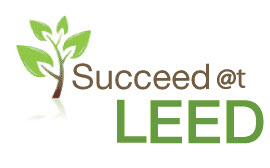By Sherry Bonelli
Cleaning is one of the most important ongoing activities in existing buildings. Maintaining a clean environment is important for the building occupants, but you also want to make sure that the cleaning products and methods used do not adversely affect the environment.
So what is green cleaning and how can you get a Green Cleaning Policy created for your LEED project?
Green cleaning is any program that establishes rules, policies and guidelines to clean buildings in an environmentally friendly way. Many people question the effectiveness of green cleaning. The effectiveness of a cleaning program can be evaluated by several ways: occupant comfort and conditions, smells, dust, allergens in the air, VOCs and other pollutants, pest control, bacterial and microbial concentrations, etc. If done properly green cleaning can be just as effective as cleaning with harsh chemicals or by other traditional cleaning methods.
When correctly implemented green cleaning will effectively keep the building clean and protect the health and safety of the occupants and the natural environment. There are two main goals in green cleaning: the health of the building occupants the health of the natural environment.
There are several things that are factored into proper green cleaning, namely what goes in the cleaning products and how those products are disposed of. (Oftentimes cleaning agents are just flushed down a drain, allowing the chemicals to get into the water supply and possibly harm wildlife and the natural environment.)
Green cleaning programs specify how cleaning supplies and agents are to be disposed and/or specify the use of cleaning agents that won’t harm the environment. Another consideration is the byproducts of the chemicals used for cleaning and their atmospheric impacts. For instance, some cleaners release fumes or contain chemicals that can be harmful to building occupants and the natural environment. Additionally, many cleaning agents have not been tested to determine the long-term impact those chemicals may have on the building occupants.
Americans spend approximately 90% indoors each day, so it’s important to keep a building environment clean and healthy for the people in the LEED building. Maintaining good air quality is very important. A Green Cleaning Policy is an effective way to impact the air quality of a building.
Creating the Green Cleaning Policy for your LEED project is typically defined by building management and this policy details the operating procedures, purchasing requirements and other instructions to reduce the environmental impact of building cleaning operations. As a LEED professional, you should offer advice on how to create this Green Cleaning policy in order to get the credits towards your LEED project.
Typically building managers are the ones that actually craft the green cleaning policies and protocols. As a LEED professional, you can help by ensuring that during the design and building process materials used in the LEED building require little cleaning or maintenance, if possible. Custodians should also be an important part of creating a Green Cleaning policy – after all, they are the ones using the chemicals to clean the building.
Here are a few important things to consider when it comes to dealing with cleaning chemicals:
• It’s important to educate the custodial staff of the dangers of mixing chemicals – even on a surface
• Mixing ammonia and bleach is particularly hazardous
• When using chemicals it’s important that chemicals be used in a well-ventilated environment
• Ammonia should be diluted
• Direct contact with skin of many cleaners can cause skin irritations
• VOCs are found in lots of cleaning products: toilet cleaners, oven cleaners, furniture polish, laundry detergent and dishwashing detergents
• Sodium Hydroxide is used in drain cleaners, oven cleaners and metal cleaners – direct contact with skin can cause burning and the vapors can cause airway irritation
• Phosphates can be destructive to marine environments when washed down the drain because they act as fertilizers for algae and other water plants which can disrupt the ecosystems
• The workers most at risk are the people that use these cleaning products
There are many alternative cleaning products available. Select labeled products approved by Green Seal, Design for the Environment U.S. EPA or Greenguard.
When creating a Green Cleaning plan, you want to set the criteria for building purchases – what cleaning products should be purchased to clean the building. You also want to look at ongoing consumables, like paper towels and hand sanitizers.
Another important part of a green cleaning is to schedule cleaning during times when the building is largely unoccupied. The Green Cleaning policy should specify when certain cleaning tasks should be completed (like pest extermination, carpet cleaning, changing air filters, etc.) The Green Cleaning policy should also specify what procedures and precautions should be used by the cleaning staff to protect them as they’re cleaning. You also want to make sure cleaning personnel are well aware of what to do in case of a chemical spill or accidents. It’s best to provide a comprehensive training program that instructs the janitorial staff about these types of issues.
For occupant health, green cleaning will provide for a more sanitized environment, cutting down on sick time, will help keep the air quality safe and will ultimately protect the environment.
To find out more about green cleaning and other LEED-related topics, I highly recommend you check out the Green Building Research Institute’s LEED training material and CE unit courses .

